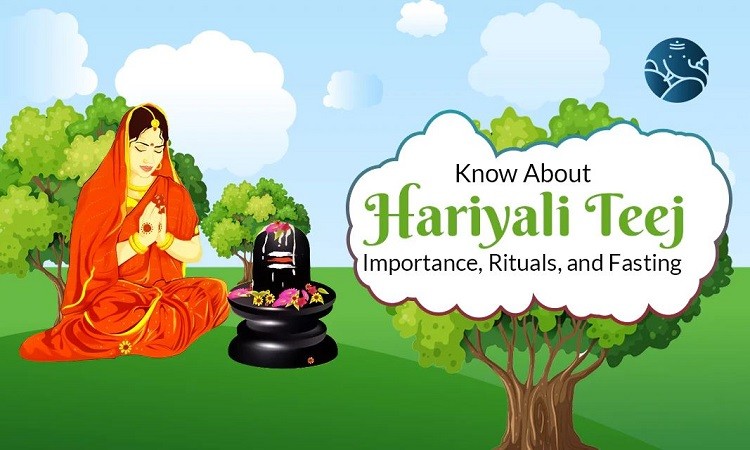
Hariyali Teej, a prominently observed Hindu festival, takes place on the Tritiya Tithi (third day) of the Shravan Shukla Paksha, typically occurring two days before Nag Panchami. This year, in 2023, Hariyali Teej will be celebrated on August 19th, as per the Hindu Panchang. Falling on the Tritiya Tithi during the Shravan Shukla Paksha, it is recognized as one of the most widely celebrated Hindu festivals, and it usually precedes Nag Panchami by two days.
The Hariyali Teej festival is a cherished Hindu celebration that holds profound cultural and spiritual significance. This festival marks the advent of the monsoon season in Nepal and is predominantly observed by women. It encapsulates not only the joy of the impending rains but also celebrates the divine union of Lord Shiva and Goddess Parvati. The festivity is characterized by its exuberant rituals, vibrant attire, and a sense of rejuvenation that resonates with both nature and spirituality.
Hariyali Teej and the Celebration of Love: Hariyali Teej is a part of the larger Teej festival tradition, which encompasses three distinct types - Hartalika, Haryali, and Kajari. Among these, Hariyali Teej is celebrated with particular fervor and enthusiasm. It occurs during the Shukla Paksha (bright fortnight) of the Shravana month in the Hindu lunar calendar, falling usually in August or September. The festival is dedicated to Goddess Parvati, who is revered as the epitome of marital devotion and strength.
The Divine Reunion: The core theme of Hariyali Teej revolves around the mythological story of Lord Shiva and Goddess Parvati's reunion. According to Hindu scriptures, Parvati ardently prayed and performed rigorous penance to win Shiva's affection. Her devotion and determination touched Shiva's heart, leading to their eventual union as husband and wife. Hariyali Teej commemorates this union and serves as a reminder of the sacred bond between spouses. Devotees view this celebration as a source of inspiration for fostering love, understanding, and harmony in their own relationships.
Rituals and Observances: Hariyali Teej is characterized by its rich tapestry of customs and rituals that accentuate its spiritual essence. Women dress in vibrant green attire to symbolize the lushness of the monsoon season. They create intricate mehndi designs on their hands, depicting their devotion to Lord Shiva and Goddess Parvati. Fasting is a common practice during this festival, where women abstain from food and water to seek blessings for marital bliss and conjugal harmony.
The festival's celebrations often include women singing traditional Teej songs and engaging in folk dances. A significant aspect is the swinging on beautifully adorned swings, which is not only a source of enjoyment but also reflects the playful dynamics of marital relationships. Temples are adorned with flowers, and images of Shiva and Parvati are ceremonially bathed to signify their divine union.
Monsoon and Nature's Rejuvenation: Hariyali Teej's timing aligns with the onset of the monsoon season, a period of great significance in the Indian subcontinent. The rains are essential for agriculture and the replenishment of water bodies. The festival's association with monsoons underscores the deep connection between nature and spirituality. Just as the earth rejuvenates during this season, devotees seek spiritual rejuvenation through their devotion and observances.
Social and Cultural Implications: Hariyali Teej goes beyond its religious significance to hold cultural and social relevance. It provides women with a platform to gather, celebrate, and strengthen their bonds. The festival promotes the idea of mutual respect, love, and companionship in marital relationships. Moreover, it is an occasion for women to express themselves creatively through art, dance, and clothing, fostering a sense of empowerment.
The Hariyali Teej festival stands as a vibrant mosaic of culture, spirituality, and nature's cycles. As women come together to celebrate, reflect, and seek blessings for their relationships, they also pay homage to the divine unity of Lord Shiva and Goddess Parvati. This celebration encapsulates the essence of devotion, love, and the harmonious interplay between human relationships and the natural world. It serves as a reminder that amidst life's challenges and transformations, the bonds of love and faith remain steadfast.